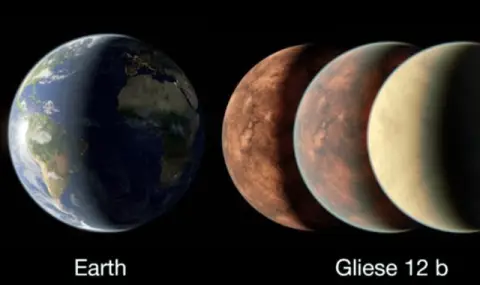A team of astronomers used observations from multiple telescopes to discover a potentially habitable exoplanet the size of Earth. It turns out there is one. The exoplanet Gliese 12b is located around a red dwarf star just 40 light-years from our system. The average temperature of the surface of the exoplanet is about 40 °C, which can be considered comfortable for the emergence of life as we know it from our planet.
The parent star of the exoplanet Gliese 12 belongs to the spectral type M3.5V - it is the so-called red dwarf. Most of these stars are in our galaxy - up to 70%. This makes the discovery of a potentially habitable Earth-like planet around a red dwarf quite promising. The proximity of the planet to the star does not make its life risky.
Red dwarfs are hyperactive only in the early stages of evolution and can remain stable for hundreds of billions and even trillions of years, which is many times longer than the life of our Sun, for example. Therefore, life can develop on them as long as it wishes.
Exoplanet Gliese 12 was discovered by the transit method using NASA's TESS telescope. The observations also confirmed data from the CHEOPS telescope and a number of ground-based instruments. In addition to the transit method, the presence of an exoplanet around the star was confirmed by data on fluctuations in its radial velocity recorded by the HARPS-N and TRES spectrographs.
The information obtained helped to calculate the mass, size and density of the exoplanet. Gliese 12 turned out to be slightly lighter than Earth (0.88 masses of our planet). Its radius roughly corresponds to the radius of the Earth. The big problem is the availability of atmosphere.
Both transit observations did not provide reliable information about the presence of a gas envelope around Gliese 12. However, this has its advantages – it can be rare and difficult to distinguish. The atmosphere around the Earth is also thin. On the contrary, the presence of a dense atmosphere around an exoplanet may reduce the chances of life arising.
A good example is Venus. The dense atmosphere and the greenhouse effect create conditions there where lead melts. Scientists hope to clarify the problem with the atmosphere of Gliese 12 with the help of the space telescope. James Webb. They have already requested operating hours of this NASA instrument.
